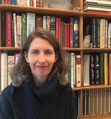Reading the Theatre: What I read and watched (plus your contributions)
What I enjoy most about my month of Reading the Theatre is letting one thing lead to another…reading books and plays and watching movies or recorded shows that complement and build on each other, in spontaneous and unexpected ways.
This time, since I’m reading through the Oz books for the Ozathon, my path started with a reread of Gregory Maguire’s novel Wicked, basis for the hit musical (which will get a long-awaited film version this fall). I also read parts of Wicked: A Musical Biography — but only real fanatics of the show will want to read about every chord change that flitted through Stephen Schwartz’s mind and every idea he scribbled on a scrap of paper. For me, it was useful in reminding me how the musical departs from the book.
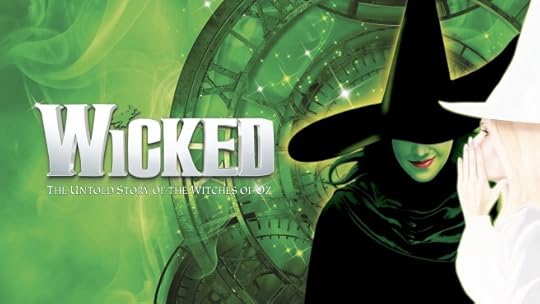
For those who don’t know either, they both go in a significantly different direction than the original. Maguire’s version is by far the darkest, injecting a preoccupation with religion, lust, and violence quite foreign to the spirit of Baum’s creation. It has a compelling kind of poetic inventiveness of its own, although I found it lost energy and made no sense at the end. And it’s definitely adult fare, not meant for the preteens who flock to the musical with its girl-power theme and sanitized, feel-good ending. I enjoyed my reread, but I still tend to prefer the earlier versions (both book and movie).
Next, I read Making It So, Patrick Stewart’s wonderful memoir about his unlikely rise from poverty in Yorkshire to the bridge of the Starship Enterprise and beyond. That led me to watch his acclaimed Macbeth, which moved from a tiny festival production to the West End to Brooklyn to Broadway, and was captured by PBS in a weird underground bunker to complement the modern-dress Cold War setting. I was not entirely in accord with some of those directorial decisions, but it was certainly interesting to watch. 70s slasher films seemed to be another inspiration, giving rise to some gratuitous gore, and I skipped over the witches doing a rap version of “Double, double, toil and trouble,” which made me especially uncomfortable. The “sandwich scene,” which Stewart describes conceiving and creating in his book, was a more subtle highlight.
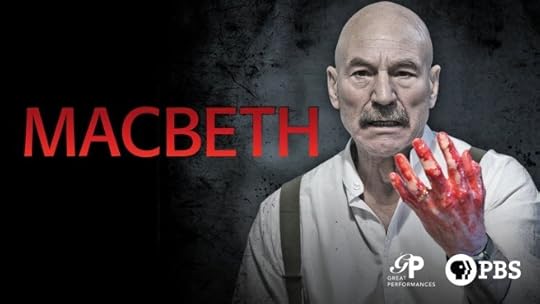
For something completely different, I also checked out the film of Match, made by Stephen Belber from his own stage play. From reviews of the stage version, it sounds like Frank Langella really camped up the starring role as a flamboyant bisexual ballet master, while Stewart gave the role a more restrained and emotionally touching character.
I seem to gravitate toward backstage mysteries, and this year I found two that also happened to count for the 1937 Club: Vintage Murder by Ngaio Marsh and Dancers in Mourning by Margery Allingham. I didn’t warm to the first, a too-complicated puzzle mystery with forgettable characters, but found the second more satisfying as a psychological study of the pressures of fame.
A third, lesser known Golden Age mystery, Death on the Down Beat, had an unusual epistolary format that didn’t quite work (would a detective really send all the evidence in letters to his wife?) It seemed to have been conceived at the moment of hearing a Strauss piece and thinking “This would be the perfect moment for a murder!” That was creative, but a bit thin as a premise, and the lack of active scenes had a distancing effect.
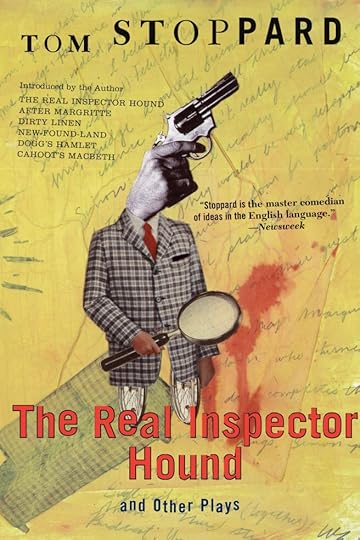
Continuing in the mystery vein, I went after Agatha Christie, curious to read her classic plays The Mousetrap and Witness for the Prosecution. I also read parts of Curtain Up: Agatha Christie, A Life in the Theatre but once again this book seems meant for die-hard fans, particularly those fascinated by the details of financial arrangements and theatrical contracts. I did learn some interesting tidbits as I skimmed the parts about these two most famous plays.
I enjoyed reading the plays, as well as Tom Stoppard’s parody The Real Inspector Hound, which skewers a lot of the things I find absurd about Christie along with the pretensions of theatre critics.
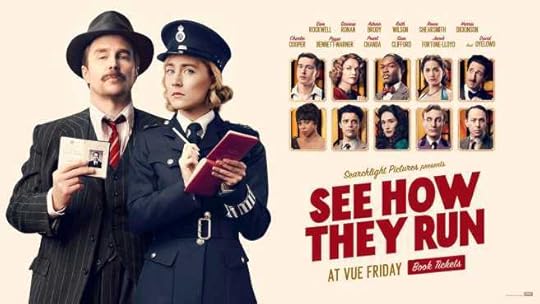
For watching along I found a recent film called See How They Run, which makes a comic murder-mystery fantasia out of the 100th performance of The Mousetrap. And it was fascinating to watch the Hollywood version of Witness for the Prosecution and notice what was changed from the stage — notably beefing up the barrister’s part for Charles Laughton (the original onstage Poirot, I learned from Curtain Up), adding a comic part for his wife, Elsa Lanchester, and providing a suitable vehicle for Marlene Dietrich as a suspicious “foreign” woman.
Having read the play, I knew all about the multiple-twist ending, but it was entertaining to see my husband and son taken by surprise. Christie does know how to play with an audience!
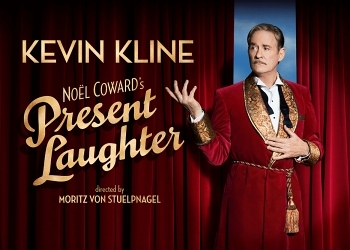
I then read a couple of romantic comedies by Amy Poeppel, Limelight and Musical Chairs. Poeppel’s books are decidedly about “rich people’s problems” — one centering on a mother whose move to Manhattan has not gone as planned, the other a cellist with a famous and overbearing conductor-composer father. But they nevertheless managed to charm me with some endearing characters and comic situations.
The obvious watch-along would be Charlie Chaplin’s movie Limelight, which Poeppel imagines being made into a Broadway musical with a sullen teenage pop star, but I have not yet gotten around to that. Instead I watched the Great Performances video of Kevin Kline in Noel Coward’s Present Laughter — Poeppel imagines Kline coming off his Tony win for that role to star in her invented show. Kline was great, along with some of his older co-stars, but I found the younger actors distressingly shrill and nervous. They could stand to learn something from their elders, I thought.
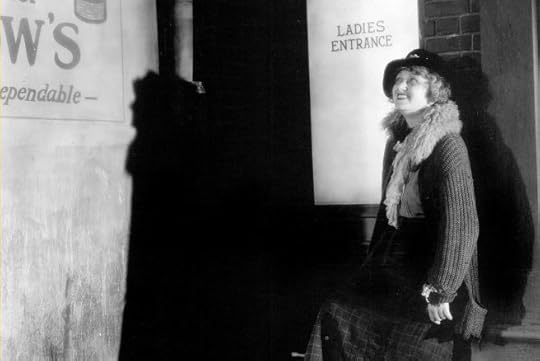 Salka Viertel in the Garbo film “Anna Christie”
Salka Viertel in the Garbo film “Anna Christie”Speaking of theatrical elders, a random library catalog search for “theatrical memoir” turned up The Kindness of Strangers by Salka Viertel, a NYRB rediscovery. Viertel grew up in a wealthy and musical Jewish family in Galicia (now Ukraine). She was determined to be an actress, while her brother became the foremost interpreter of Schoenberg’s music. She tells vivid stories of her theatrical mishaps along with her successes, giving a priceless view of the central European theatre in a time of transition to modernity.
After marrying and moving with her husband to California she became a screenwriter, mainly trying to create vehicles for her friend Greta Garbo that the Hollywood system tended to sabotage or dumb down. I found it sad that her family life ended up being troubled — she makes light of this, but the way she and her husband ran around with other lovers must have been hard on the three kids. However, Viertel was clearly a vital and courageous personality and I was glad I happened upon her story. She generously aided many refugees, and was a focus of the exile community in Hollywood, where her helping efforts sometimes backfired (trying to get a job for Schoenberg to write movie music, for example, was not a good idea.)
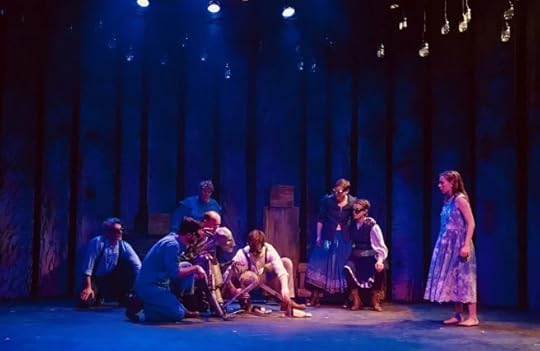
Returning to Oz, to round things out I found an odd little show to watch called The Woodsman, which imagines the backstory of the Tin Woodsman. Played in a tiny theater, in an imaginative near-wordless staging, its story was told through mime, music, and puppetry. It was truly original, a good reminder that the magic of theatre does not reside in flashy effects or star power. A couple of actors, some sticks and boxes, and simple costumes on a bare stage can conjure up a whole world.
There were so many other things I could have read or seen, but I have to leave those possibilities for next time. I was happy that a few blogging friends joined in with their own discoveries. Please let me know if I missed any.
Theatre at Literary Potpourri A Bullet in the Ballet and Quick Curtain at Staircase Wit Magic Flutes and Volpone at Calmgrove Quick Curtain at She Reads Novels
